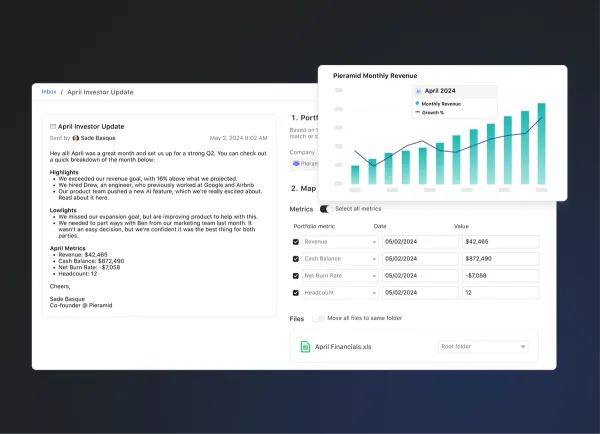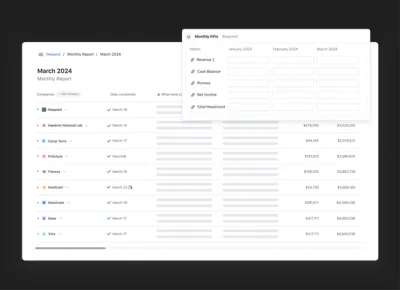
Navigating the complexities of investor agreements is crucial for startup founders aiming to secure crucial funding while protecting their interests. This article will guide you through the essentials of crafting a solid investor agreement, highlighting key components like investment terms, company valuation, and exit strategies. You'll learn not only what makes up an investor agreement but also how to tailor one to fit your startup's unique needs, ensuring a clear path to successful investor relationships.
What Is an Investor Agreement?
An investor agreement is a legal contract between an investor and a company that outlines the terms of the investment. It specifies the roles, expectations, and obligations of both parties, ensuring that the investor's financial contributions are protected and that the company uses the funds as agreed upon. There are several types of investor agreements commonly used in business, each tailored to different investment scenarios:
- Stock Purchase Agreement: This type of agreement is used when investors purchase shares directly from the company, giving them ownership according to the percentage of stock acquired.
- Convertible Note Agreement: Often used in early-stage startups, this agreement allows the investment to initially be a loan that converts into equity, usually after a subsequent financing round or under certain conditions outlined in the agreement.
- Simple Agreement for Future Equity (SAFE): Popular among startups for its simplicity and flexibility, a SAFE grants investors the right to convert their investment into equity at a later date, typically during a future funding round.
- Restricted Stock Agreement: This agreement governs the issuance of shares that are subject to certain restrictions, typically vesting over time and providing that shares must be sold back to the company under certain conditions.
- Debt Agreement: When startups prefer not to give up equity, they might opt for debt agreements where the investor lends money to the business, to be repaid with interest by a specified date.
Each type of agreement has its nuances and must be chosen carefully based on the company’s specific needs and the investor's expectations. It’s crucial for founders to understand these distinctions to choose the most appropriate form of agreement for their circumstances.
Key Components of an Investor Agreement Template
When structuring an investor agreement, it's essential to include comprehensive and detailed sections that address every aspect of the investment relationship. This clarity not only safeguards both parties' interests but also ensures smooth cooperation throughout the duration of the agreement. Below, we delve into the key components that should be part of any investor agreement template, each playing a crucial role in fostering a transparent and effective partnership.
Related resource: A Complete Guide on Founders Agreements
1. Preliminary Information
The foundation of any investor agreement begins with the preliminary information, which includes all the basic and identifying details such as the names, addresses, and legal statuses of the parties involved, as well as the date of the agreement. This section sets the legal context for the agreement and acts as a reference point for all parties involved, ensuring there is no ambiguity about who is bound by the terms of the document.
2. Investment Details
Specifying the investment details is critical. This includes the amount of investment, the form it will take (whether cash, assets, or services), and any conditions or milestones that must be met before the investment is realized. Clear articulation of these details prevents misunderstandings and sets clear expectations for the deployment of the investment, which is vital for both parties’ financial planning and accountability.
3. Company Valuation and Capital Structure
It's important to clearly outline how the company is valued and how its capital structure will be affected post-investment. This information sets the stage for determining ownership percentages and the distribution of equity. Transparency in this area reassures investors about the basis of their investment valuation and aligns all parties’ expectations regarding their stakes.
4. Roles and Responsibilities
Defining the specific roles and responsibilities of both the investor and the startup is crucial for maintaining clear expectations and accountability. This section should detail the commitments of each party, including any operational roles the investor might assume, and their involvement in decision-making processes. Clarity here ensures smooth day-to-day operations and helps prevent conflicts.
5. Terms of Investment
The terms of investment outline the specifics of the financial relationship, such as the rights to dividends, conversion rights, and voting rights. This section is fundamental as it delineates how profits and losses are distributed, how and when investments might be converted into equity, and how investors can influence company decisions through their votes.
6. Governance and Voting Rights
Governance structures and voting rights are essential for outlining how decisions are made within the company, who gets to vote, and what issues require a vote. This framework is key to maintaining order and clarity in the company's decision-making processes, particularly in scenarios involving multiple investors with varying stakes.
7. Exit Strategies
Planning for future changes in ownership or the potential exit from the company is crucial. This part of the agreement might include buyback rights, rights of first refusal in case of sale, and other mechanisms that allow for a smooth transition or exit. Having these strategies predefined helps manage expectations and reduces potential conflicts during critical transitions.
8. Confidentiality and Non-Disclosure
To protect the sensitive information of both the startup and the investor, confidentiality and non-disclosure clauses are critical. These provisions help build trust, protect trade secrets, and ensure that strategic information does not fall into competitors' hands.
9. Dispute Resolution
Finally, having a predetermined method for resolving disputes is crucial for handling disagreements efficiently and fairly. This section should specify whether disputes will be handled through mediation, arbitration, or court proceedings, and outline the steps each party should follow in the event of a disagreement.
Related resource: What Should be in a Startup’s Data Room?
How Do You Write an Investor Agreement?
Drafting an investor agreement is a critical step for any startup engaging with investors. This document not only formalizes the relationship between a company and its investors but also ensures that both parties are clear on the terms of the investment. Below, we detail the essential steps involved in creating a robust investor agreement that secures interests and fosters a positive business relationship.
Gathering Information and Structuring the Agreement
The first step in drafting an investor agreement is to collect all necessary information about the investment and the parties involved. This includes details about the investment amount, the structure of the investment (e.g., equity, debt), and the specific roles and obligations of each party. Accurate and comprehensive information is crucial as it forms the basis of the agreement, ensuring that all terms are based on a clear understanding of the investment and the expectations of both parties. This foundational step prevents future misunderstandings and lays the groundwork for a solid legal agreement.
Involving the Right Parties
It is essential to identify and involve all relevant parties in the agreement process. This includes not only the investors and company founders but also may include lawyers, accountants, and other stakeholders who have a vested interest in the transaction. Ensuring that all parties are appropriately represented and that their roles and expectations are clearly defined from the outset is crucial. This clarity helps in avoiding conflicts later and ensures that the agreement reflects the interests and responsibilities of everyone involved.
Drafting Key Clauses
The heart of the investor agreement lies in its clauses, which detail the terms of the investment, rights, and obligations of the involved parties. Key clauses include those related to the amount and structure of the investment, conditions for funding, management and use of the investment, investor rights, and any specific covenants related to company governance. Each clause must be drafted with clarity and precision to avoid ambiguity and ensure that the terms are enforceable. Legal expertise is often required in this phase to ensure that the clauses are legally sound and adequately reflect the agreed-upon terms.
Negotiation and Finalization
Once a draft of the investor agreement is prepared, the negotiation phase begins. During this stage, both parties review the draft, suggest modifications, and discuss any concerns they might have with the proposed terms. This phase is crucial as it allows both sides to refine the agreement to better meet their needs and to ensure mutual understanding and satisfaction with the terms. After negotiations are completed, the final agreement is prepared for signing. It is advisable for both parties to have legal counsel review the final document to ensure that it is comprehensive and legally binding.
Related resource: The Startup's Handbook to SAFE: Simplifying Future Equity Agreements
Build Strong Investor Connections with Visible
Crafting a solid investor agreement is key to protecting the interests of both the startup and its investors. Establishing clear terms and open lines of communication from the outset can significantly enhance these critical business relationships.
To manage and enhance investor relations with ease and efficiency, try Visible. By using Visible, you can streamline investor communications, track important metrics, and report progress efficiently, keeping your investors engaged and informed. Ready to take your investor relations to the next level?
Try Visible free for 14 days and start strengthening your investor connections.




